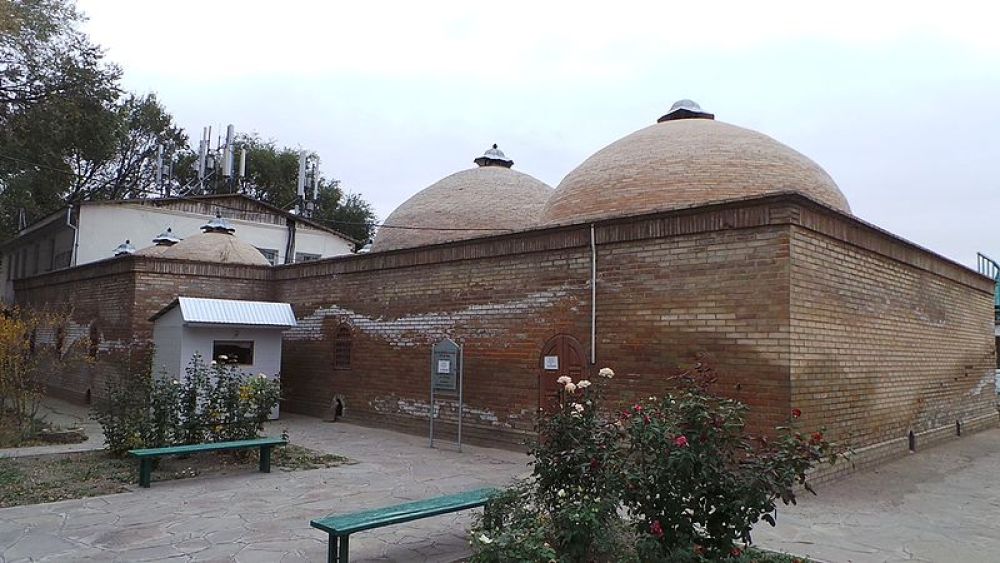

The city of Taraz, located in southern Kazakhstan, is among the oldest cities in the country, boasting a rich history that spans over two millennia. Known for its historical significance along the Silk Road, Taraz has been a melting pot of cultures and traditions. One of the remarkable historical sites in Taraz is the Kali Yunus Bathhouse, a testament to the city's ancient architectural and cultural heritage.
The origins of the Kali Yunus Bathhouse, also known as the Baths of Kali Yunus, are shrouded in the past but are believed to date back to the 12th or 13th century. The bathhouse is a unique relic of the past, a representative of the public bath culture that was prevalent throughout Central Asia during the medieval period. It was named after Kali Yunus, a respected figure of the time, and has survived through the centuries as a monument to Taraz's historical wealth.
The Kali Yunus Bathhouse is an extraordinary example of medieval bathhouse construction. The structure follows the classic Central Asian design for bathhouses, featuring a complex system of underground heating. Its architecture reveals intricate brickwork and the utilization of dome-shaped ceilings to facilitate steam circulation. Conservation efforts have maintained the original features of the bathhouses, enabling visitors to appreciate the ingenuity of ancient builders.
Tourism in Taraz has grown significantly over the past few decades, with increasing recognition of its historical and cultural sites. The Kali Yunus Bathhouse has become a focal point for tourists interested in the historical narrative of Kazakhstan. Efforts to preserve and promote the bathhouse as a destination are apparent, with the Kazakh government and various international organizations investing in the restoration and upkeep of the site.
Today, the Kali Yunus Bathhouse is not operational as a public bath but serves as a historical attraction open to the public. Tourists visiting the site can explore the ancient chambers, learn about the traditional bathing rituals, and marvel at the surviving elements of the bathhouse. Educational tours offer insights into the significance of public bathhouses in Central Asian culture and the technological advancements of the time.
The city of Taraz has embraced a trend towards cultural and heritage tourism, positioning its ancient monuments, like the Kali Yunus Bathhouse, at the center of its tourism narrative. The local authorities are developing comprehensive strategies to attract both domestic and international visitors through interactive experiences, historical reenactments, and enhanced visitor facilities.
In conclusion, the Kali Yunus Bathhouse in Taraz, Kazakhstan, continues to serve as a symbol of the city's rich historical tapestry. Its preservation and integration into the modern tourism landscape reflect the ongoing dedication to celebrate and share the unique heritage of Taraz with the world. As interest in Silk Road destinations grows, sites like the Kali Yunus Bathhouse play a pivotal role in enriching the cultural understanding and historical appreciation of visitors from near and far.